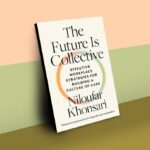
Generational divides…reinforce systems of oppression.
Amid the urgent challenges of our time, many nonprofits are also grappling with disconnection, mistrust, and “othering” across generations. These tensions sap creativity, reduce engagement, stunt leadership growth, and weaken organizational power, just when it’s needed most. While intergenerational frictions are not new, they have intensified, driven by shifting social conditions, remote work, and the accelerating pace of technology.
Intergenerational collaboration can unlock creativity, wisdom, and resilience—resources we desperately need. But harnessing our full collective talent, energy, and spirit is hard.
How can we build something better? Here we share insights from our years of working as organizational development consultants in intergenerational, cross-racial partnership. We focus specifically on generational divides because these patterns of dehumanization reinforce systems of oppression.
To move toward partnership, we first need to name the habits and mindsets that get in the way. Below are some of the most common challenges that we’ve witnessed, and why they matter.
Confusion About Power
We believe generational divisions stem from the same mindset that perpetuates racism, sexism, and other forms of oppression: the ideology of dominance and subjugation or the belief that one group is more worthy and should hold power, while another should have little or none. One persistent mindset is the belief that power is a zero-sum game. Power is not only seen as finite, but inherently dangerous when held by the “other.”
This is often embedded in workplace cultures that do not directly engage issues involving power, generational tension, or racialized experiences of exclusion. In many nonprofits, roles and decision-making can be murky.
Despite best intentions, many nonprofits replicate the very systems of dominance that they are seeking to challenge. Hierarchies rooted in tenure, age, and positional authority can mirror cultures of dominance. For example, nonprofit boards—often made up of older, wealthier members—can reinforce generational and class divides.
There is often fear that surfacing issues of power will cause conflict or seem divisive. Power based on identity or position is often left unspoken, with differing assumptions about what that power means and how it can be used. But avoiding talking about these issues doesn’t make the tensions go away—it simply pushes them underground, where they fester and fuel mistrust.
Cultural Norms
Generational and cultural messages often tell us who “should” have answers, authority, or power. One of our clients summed up this norm when recalling how his deputy had solved a thorny problem when he could not: “I felt terrible. I’m the one who is supposed to know the answers!”
These assumptions can box us in—elders believing they must always know, younger people doubting their voices will be valued, or colleagues dismissing each other’s ideas as too old-fashioned or too naive.
True intergenerational partnership asks people to embrace the complexity of ourselves and a changing world.
We frequently witness impatience among generations. If you’ve scrolled social media, you’ve been bombarded with generational stereotypes. While some might be fun to laugh about—such as the millennial’s commitment to no-show socks—these, like all stereotypes, keep from seeing each other as fully human.
Dominant culture reinforces individualism and siloing, undervaluing the rich possibility of cross-generational relationships. In many organizations, people affiliate primarily with those closest to them in age. Some generational stereotyped examples that may hold grains of truth but are, of course, not universally true, might be:
- Baby boomers: Grew up amid post-war prosperity and the Civil Rights and Vietnam protest eras, shaping optimism about progress, commitment to meaningful work, and skepticism of authority.
- Gen X: Formed during economic recessions, rising divorce rates, and the end of the Cold War, shaping self-reliance and a wariness of institutions and “joining.”
- Millennials: Came of age during 9/11, rapid tech expansion, and the 2008 recession, shaping adaptability, collaborative approaches, and economic anxiety.
- Gen Z: Growing up with the climate crisis, political polarization, early work experiences disrupted by the pandemic and digital hyperconnectivity, shaping activism, urgent calls for change, and intolerance for ineffective and incongruent workplace cultures.
These contexts can help explain—but should not excuse—some of the misunderstandings that arise at work. Younger colleagues may be sidelined as impatient or unready for leadership, while older staff worry about using the “right” language, keeping up with new technologies, or becoming irrelevant. What older generations see as rude—wearing AirPods or checking phones in meetings—may feel essential to younger colleagues.
At the same time, older staff can feel frustrated by what they perceive as entitlement or unrealistic expectations, while younger staff burn out against slow systems, opaque hierarchies, and the refrain, “This is how we’ve always done it.” They may lose faith when older colleagues struggle with what seem like basic technological tasks, such as creating a shared calendar.
When we reduce each other to caricatures of our generational identities, we fall into “othering” that keeps us from seeing one another’s full humanity or valuing each other’s wisdom. True intergenerational partnership asks people to embrace the complexity of ourselves and a changing world.
As Grodsky wrote in Justice, Love, and Organizational Healing: A Guide to Transformational Consulting, “In order to build the world we want, we need to build new skills, ways of being, and habits in ourselves, our organizations, and our movements.”
The tips we share here are meant to strengthen both individual and collective practices, helping bridge generational divides and foster respect, learning, and organizational effectiveness.
Own Your Generational Identity and Don’t Let Your Ego Drive
Dominant culture distorts how we see our own worth—too old, too young, ready for power, not ready enough. But the challenges that our organizations face demand everyone’s full gifts. When people lead with honesty and humility, they make space for others’ brilliance and true partnership.
Tips:
- Understand your own perceived identity and the gifts it offers. Particularly if you hold a privileged identity, always remember that this grants you power and shapes dynamics.
- Reflect on power. What formal or informal power do you hold? How do your assumptions about age—your own and others’—influence how you show up?
- Notice your reactions—defensiveness, impatience, certainty, self-doubt—as cues to pause and reflect on what is shaping your perceptions. Notice when familial or generational tropes surface (such as, “Elders should know everything,” “Young people aren’t ready.”).
- Get comfortable with not knowing and say so when you can. Ask for help when you need it.
- Share knowledge without attachment to being “the expert.” Explain the “why” behind an opinion.
Build Structures that Foster Partnership
Organizational structures are often rigidly designed to perpetuate the status quo and hence oppression. Creating workplace structures within which we see each other as fully human and everyone can do their best work is more possible when the why, what, and how of our work are clear.
Tips:
- Clarify goals and roles for each piece of work using the POP model (Purpose, Outcomes, and Process, developed by Leslie Scholl Jafee and Randall Alford)
- Purpose: Why are we doing this? Why does it matter?
- Outcomes: What results are we aiming for together?
- Process: What tasks are involved? Who is accountable for what? What are the timelines?
- Design systems for accountability, like regular check-ins, opportunities for mutual feedback, and formal evaluations.
- Develop workplace agreements to remove unspoken assumptions.
- Share power whenever possible. This means involving people with wisdom and investment in an issue in real and meaningful ways in decision-making.
- Always ask, “Who needs to know about what?” Establish clear communication norms for information to flow intentionally across hierarchies and generations.
- Use conflict as a tool for growth. Create space and value for questions, dissent, and disagreement in ways that respect all voices.
- After mistakes or tensions, ask, “What did we each learn from this and how can we handle it differently?”
- Have structured opportunities for mentoring and mutual learning in all directions.
- Name when you are replicating dominant power structures (for example, defaulting to the oldest person speaking first).
Developing trusted relationships doesn’t just happen, not even when we share values and goals. Relationships must be intentionally cultivated.
Redefine Workplace Relationships
“Professionalism” calls on us to leave our humanity at the workplace door. In its most limiting form, it teaches us to see one another as roles, functions, or even obstacles, rather than as full human beings. As Barry Oshry reminds us in Seeing Systems, instead of relating person to person, we slip into relating role to role, or even generation to generation.
Why do we need real relationships in the workplace? Because our lives are enriched in relationship. Because we grow and learn in relationship. Mutual relationships aren’t just nice to have—they’re essential.
Developing trusted relationships doesn’t just happen, not even when we share values and goals. Relationships must be intentionally cultivated.
Tips:
- Create space to share what matters to you—your values, experiences, and purpose—so you and your colleagues can stay grounded and inspired together, especially in hard moments.
- Treat feedback as a gift, not as a threat.
- Name dynamics around age, race, and power when they surface, without blame or shame.
- Address harm and misunderstandings directly and with care—own mistakes, repair when needed, and see conflict as a chance to grow.
- Hold the broader context of people’s lives, recognizing that circumstances and systems shape us in ways we may never fully understand.
- Teach with humility—without shame or judgment, and only with consent.
- Approach others with curiosity. Ask yourself, “What might I learn from this person if I look patiently?”
- Be intentional about small acts that build trust—following through, showing up on time, and being responsive.
Make Space for Joy, Practice Appreciation and Gratitude!
As the saying goes, what we pay attention to grows. Often our attention centers on tension, misunderstanding, or the hard work of bridging divides. Yet connection can also bring joy; it deepens through genuine appreciation. When we intentionally notice what is working well, we create room for new possibilities and stronger bonds.
Celebrating differences doesn’t mean ignoring challenges; it means holding space for both the reality of our work and the beauty of doing it together.
Tips:
- Celebrate wins—big and small—in ways that fit your culture.
- Actively notice and name aloud with each other what’s going well and what we value in each other.
- Give specific feedback that ties back to strengths.
- Practice gratitude out loud: Say thank you often and sincerely.
- Enjoy each other’s company and contributions. Don’t forget that human connection and partnership are gifts.
- Make space for laughter and lightness alongside serious conversations.
Bridging generational divides is not about erasing differences but recognizing them as sources of wisdom, creativity, and strength. When we name power honestly, design clear structures, and build relationships rooted in trust, we can move past stereotypes and mistrust. The results are stronger teams, greater resilience, and organizations ready to meet the wrenching challenges of our time.














